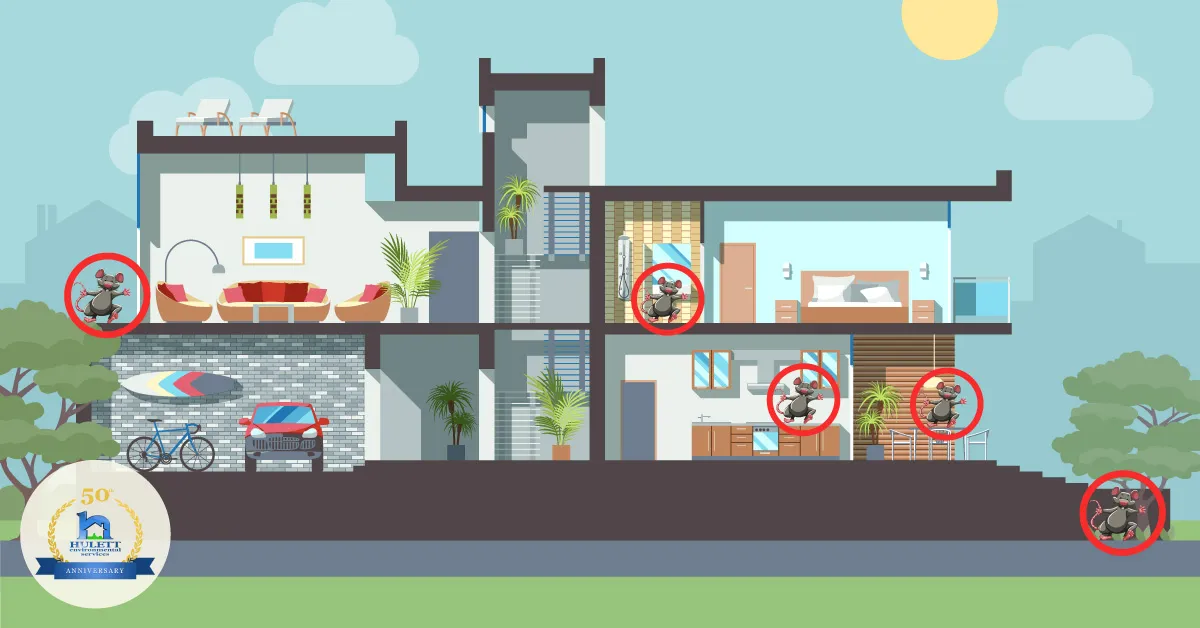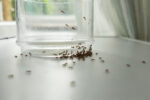
Keeping Rats Out This Winter
It’s beginning to look a lot like Christmas and with the cooler temps, rodents are looking for a place to settle down for a long winter’s nap. Your warm and cozy home, brimming with holiday goodies, not to mention the out-of-the-way, wall voids and attics to build nests in seem like ideal winter destinations, as far as rats are concerned.
Rats are resilient and able to chew through almost any material
Rats have coexisted alongside humans since humans started sharing their shelters, water, and food with them. Resilient, rats can squeeze through tiny holes in your foundation, your attic, and other entry points. These guys, with their large Freddie Mercury-like chompers, can also chew through just about anything, including brick, lead, cinder block, brick, mortar, aluminum, wood, glass, vinyl, and improperly cured concrete. Unlike the Queen rockstar, rats’ front teeth grow 4.5 to 5.5 inches each year. That’s why rats are always chewing everything they can, to keep those teeth in check. Rats chewing through electrical wiring are suspected to cause hundreds of unexplained house fires annually.
So how do you keep these persistent pests out of your South Florida home this winter?
Even though rats can chew through almost anything, sealing all cracks in your foundation and all entryways, including windows, doors, and vents will keep them from finding a way to get into your home. The right kind of wire mesh covering vents and grates can help deter rats. Mesh made from stainless steel with a diameter of at least 0.56 mm is considered thick enough to keep rats from chewing through it. Galvanized steel, softer than stainless steel, is way easier for rats to chew through, even at the same thickness as stainless steel. Branches act as bridges Tree branches and landscape shrubbery can be a welcome sign for rats that use them to access upper windows and vents. Keeping branches trimmed away from your home can deter rats from finding ways into your home. Tall grass, dense vegetation, and debris High grass, dense vegetation areas, and piles of debris, such as leftover construction materials, attract rats for all the wrong reasons. Keeping your lawn trimmed and eliminating piles of debris in your yard can eliminate places where rats can form satellite nests. Clearing out overgrown vegetation near your property can make your home less attractive to rodents, as can stacking firewood at least twenty feet from your house. Indoors Making the interior of your home unattractive to rodents involves cleaning it thoroughly. Even though you clean your house regularly, you might not think to check for spills in your pantry or vacuuming after each meal you serve. Rats can live for up to a month without eating and for several days without water, so crumbs in food prep and dining areas mean rodents score big. Water readily available in your home Rats consume water from the food they eat and don’t necessarily need a constant source of water but once rats gain entry to homes, water is readily available in kitchens and bathrooms, as well as around leaky faucets. Repair leaky faucets, dripping pipes and correct other water-prone areas in your home. Clutter Eliminate clutter in closets, under beds or anywhere rodents can hide. This includes clearing out stacks of stored cardboard boxes in attics and garages that rodents like to shred for nests and cockroaches that feast on rat feces like to hang out. Food in metal, hard plastic, and glass containers Your pantry’s important because it’s probably an out-of-the-way place with low traffic, perfect for rats to forage through for food. Notice any flour, sugar, or pancake mix boxes that look like they’ve been chewed on? Organizing your dried food supplies in metal, glass or hard plastic containers can eliminate many food sources for rats. The same goes for open bags of chips, cookies and other snacks. Keeping snacks in airtight containers may sound like a pain but not nearly as much trouble as eliminating a rat infestation.
Got rat concerns?
Tell-tale signs of rodent activity got you thinking about your next step? Those chewed bags and boxes in your pantry, scratching and/or squeaking noises behind your walls or an actual rodent sighting? Rats and other rodents are nocturnal and move around at night most of the time. You might encounter rodents at night but it’s not likely. That said, rats, when surprised or threatened have been known to bite, putting your pets and children, as well as you and your other family members at risk.
- Rats pose more health risks than the rare chance one might bite someone. Vectors of several diseases, rats, infected with a bacteria called Yersinia pestis are thought to have spread Bubonic plague, causing the fall of the Roman Empire and later killing off more than half of the European population during the 14th
- Rats also spread salmonellosis, when humans do not wash their hands after coming into contact with rodent droppings or if food, water, or utensils are contaminated with rat feces.
- Rats also transmit Leptospirosis, also known as Weil’s disease, from contact with water, food or soil containing urine from an infected animal. Symptoms range from mild or no illness to life-threatening meningitis, liver damage, and kidney failure.
If you suspect you have rat issues, Hulett suggests contacting a trusted pest professional in your area. Rats can be tricky, they’re smart and leery of new things, like baits, in their environment. Contact Hulett to schedule a free rodent inspection. Don’t let rats ruin your winter, just call Hulett!



